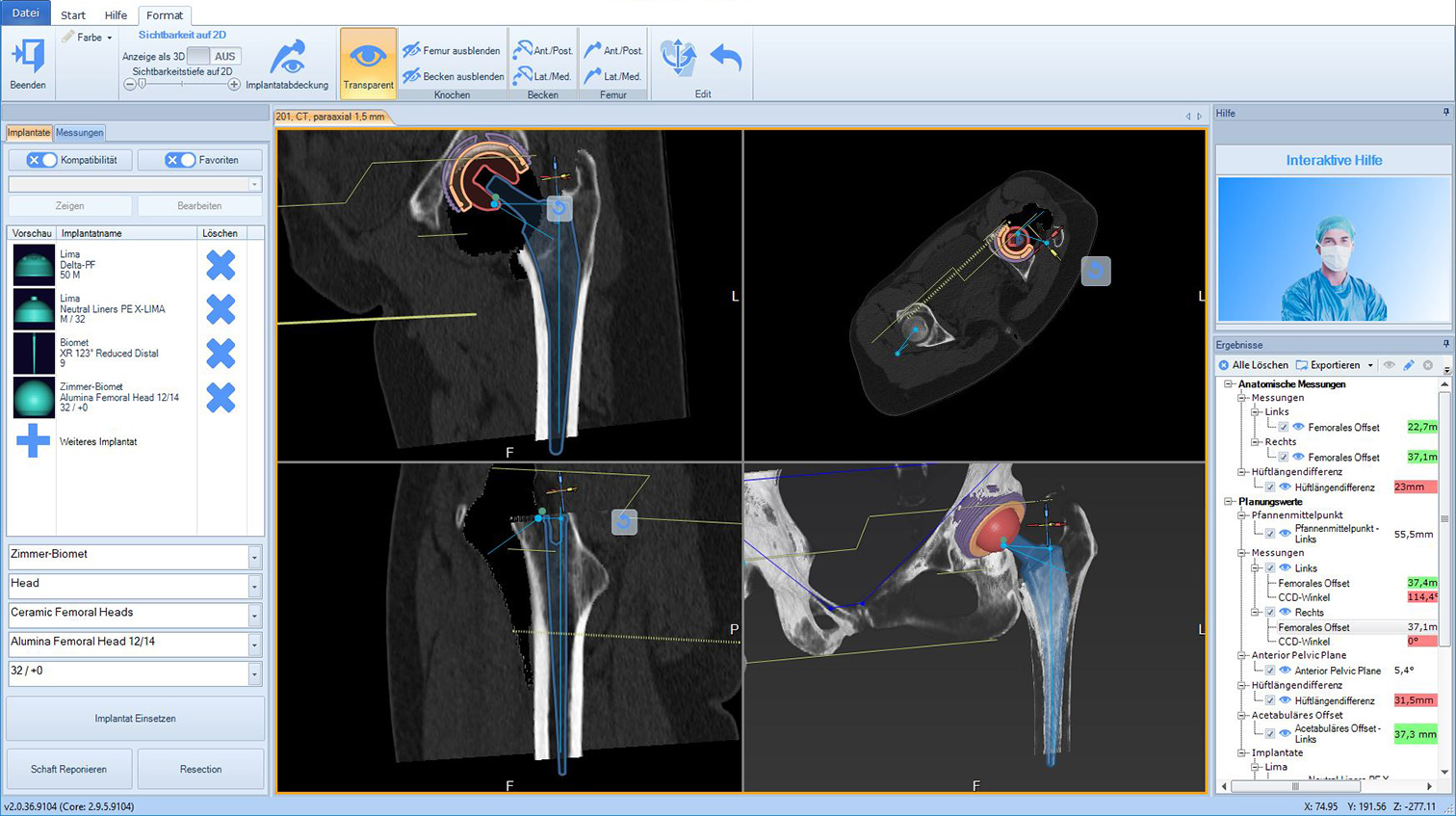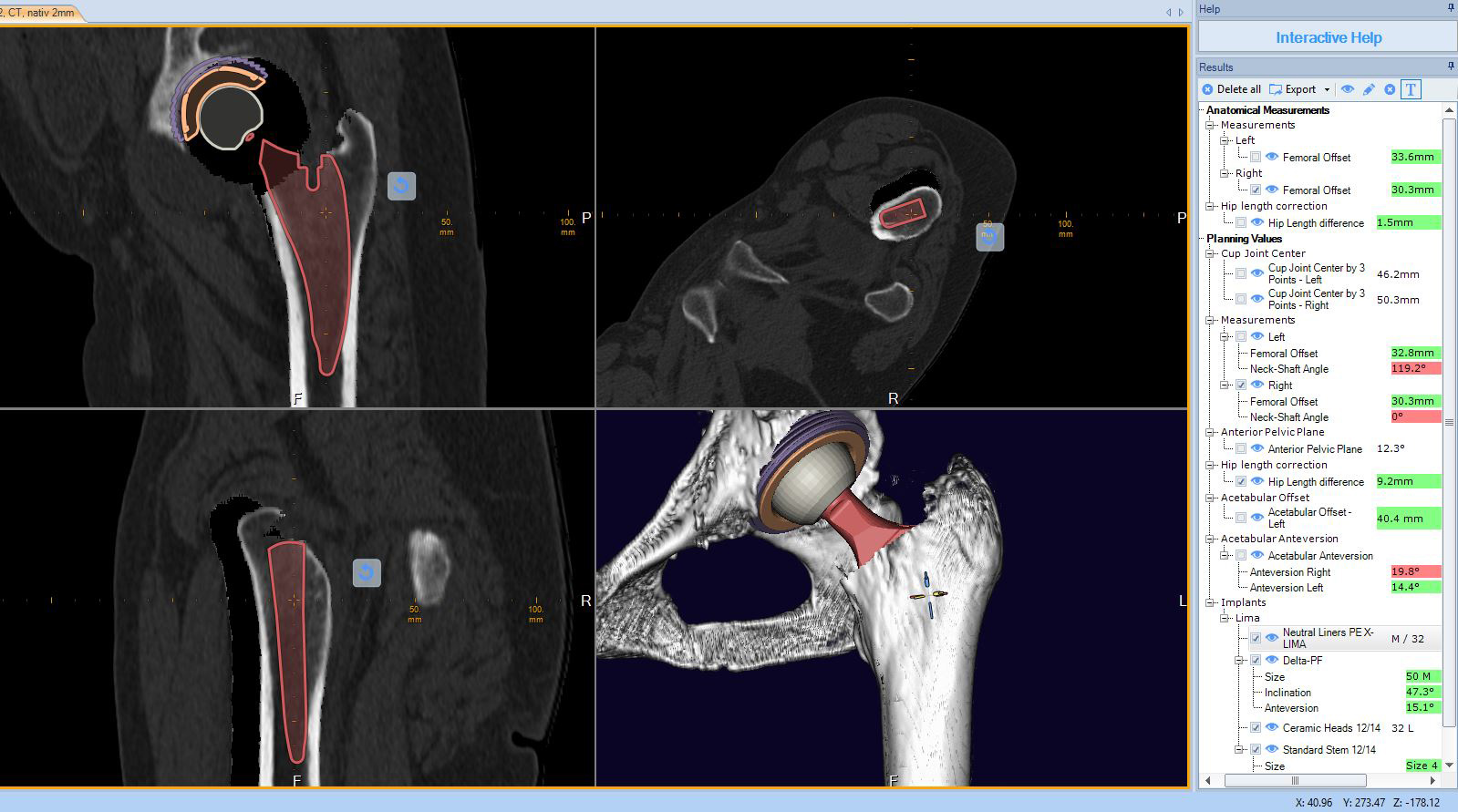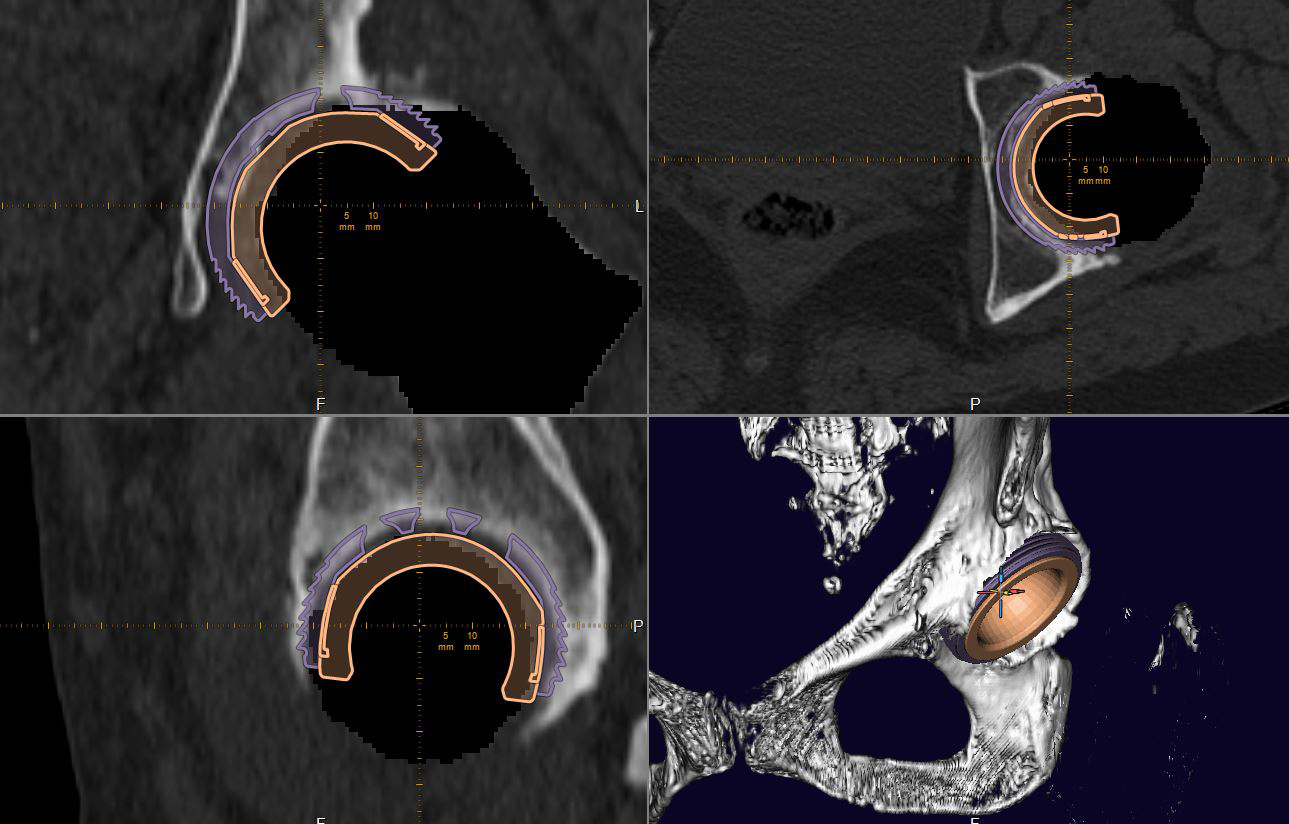



Publié le, 21.10.2022
In orthopedic terminology known as total prosthesis, arthroplasty is the name for surgery that aims to replace a damaged, or fractured joint with a prosthesis that is as close as possible to the original anatomy of the bone structures. Both the femoral head and the acetabulum are substituted by metallic, polyethylene, or ceramic components with total hip arthroplasty (THA). The components can be fixed to the bone with a layer of bone cement (cemented prosthesis) or not (cementless prosthesis). Hip replacement is one of the most successful orthopedic surgeries in modern medicine and has been evolving in recent years both in terms of materials and surgical techniques.
mediCAD® 3D Hip plays a vital role in optimizing the outcome of complex surgery. Pre-operative and Post-operative planning with this state-of-the-art software contributes to patients progressing the desired levels of functionality earlier and also to avoid secondary problems. When using this software tool, the total hip arthroplasty, the acetabular cup, and femoral stem can be properly sized and positioned, thus allowing intraoperative and postoperative success and minimizing risks. This ensures the function and long-term survival of the implants. Overall, it has a very good potential to reduce pain, restore mobility, and enhance the functionality and quality of life of patients with some hip diseases with an indication for THA.

The smooth functionality of the body’s joints depends on the integrity of the bone and soft tissue components. Therefore, diseases that affect these structures, over time, can cause deformity and pain. In this context, arthroplasty is usually indicated in cases in which the hip joint is severely damaged, and because of this damage, the patient has intense hip pain, reduced movement, and functional impairment, with no possibility of improvement with other treatments.
In cases where the indication is for hip arthrosis, the patients are usually elderly, over 60 years old. But younger patients can also be indicated for arthroplasty, and in these cases, sequelae of childhood diseases and osteonecrosis of the femoral head are some of the most common indications. In general, pain is the main symptom for patients undergoing this surgery. The patient who undergoes total hip prosthesis also suffers from loss of mobility and joint stiffness, pain in nearby joints such as the lumbar spine and knee, and a significant reduction in the patient’s quality of life.
Check below some of the main indications for THA:
From an orthopedic surgeon’s perspective, a lot of changes happened in recent years. Despite the many innovations and complexity in Hip Arthroplasty mediCAD® 3D Hip simplifies usability during preoperative planning. Especially when correcting deformities, the measurement and degree of accuracy plays a major role. Among the best clinics are using this software for virtually all endoprosthesis implantations because it guarantees additional precision and improves overall quality. In addition, it is used for validating prothesis because clinics can simulate with mediCAD® 3D Hip in such a way that they fit perfectly. This is a huge milestone in hip surgery to reconstruct the most exact offset situation and length of a bone structure.

Most importantly the patients are the true winners of this solution because surgeons have a unique way to show patients what exactly is being done during surgery. mediCAD® 3D Hip plans can simply be printed and handed over to the patient. This results in a valuable tool to evaluate post-operative results for both patients and medical staff.
mediCAD® 3D Hip Takeaway Keynotes in a Glance:
Current two-dimensional (2D) techniques do not provide sufficient accuracy, especially when confronting complex situations. For the surgical staff, the pre-operative planning consists of a sequence of examinations, typically using X-rays of the patient’s hip. However, contemporary 2-dimensional techniques often miss delivering the necessary accuracy to plan the surgery for complex outcomes. mediCAD® 3D Hip rapidly evolved to a method of transparency becoming an indispensable tool in an attempt to prepare for the possible challenges. The software offers accurate 3D measurements, better evaluation for the parameters of the pelvis and including the femoral torsion, leg length, femoral offset, and CCD angle.
Most Hip surgical clinics dealing with hundreds of interventions each year prefer using mediCAD® 3D Hip when dealing with complicated outcomes. The 3-Dimensional planning involving computer tomography (CT) offers immense advantages concerning precision. With 3D planning, physicians can simulate and evaluate postoperative 3D surgical results including the restoration of the patient’s anatomy. After all, it is the clinics’ decision when using 2D or 3D tools but in a majority of the cases, it is safe to say that for the less complex interventions 2D does its job while the difficult, more complex outcomes require the 3D software.

The easy 3D cup and stem planning is a contribution to total hip arthroplasty in becoming a highly successful surgery nowadays. As a consequence, the successful outcome provides pain relief and improved joint mobility. The long-term success of this type of procedure is related to the position and orientation of the acetabular and femoral components, which influences the wear and durability of the prosthesis.
One of the important items in preoperative planning is the determination of the ideal prosthesis size (with the use of templating), type, and adequate position, as well as the correct offset for the reestablishment of the hip anatomy. With preoperative planning, it is possible to reduce surgical time, avoid intraoperative complications, and re-establish the anatomic center of rotation of the hip. The software provides a 1:1 scale prediction of socket and cup size through automatic segmentation. Additionally, it offers optimization of cup anteversion and cup inclination.
The mediCAD® 3D Hip‘s three-dimensional visualization and planning, further simplify effective planning, reducing surgery time and risk for complications. The mediCAD 3D includes an open and extensive implant database as well as an open interface to all PAC systems. The 3D module supports imaging examinations, such as CT, low-dose CT, and MRI. Several functions are available: